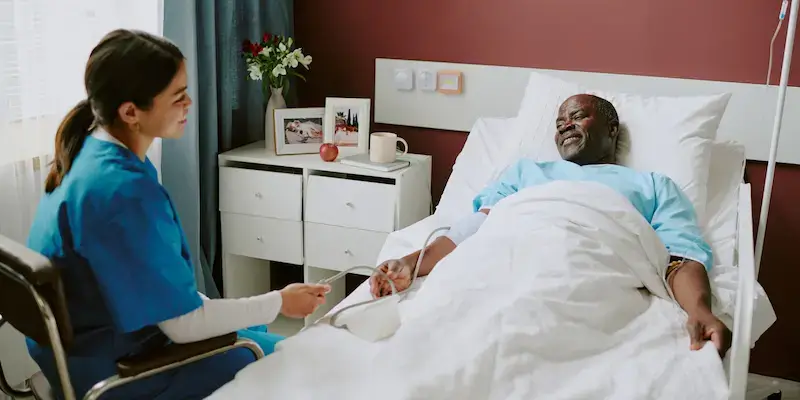Health Hub
Sports injury prevention: common injuries in active lifestyles

Being active is one of the best ways to support your physical and mental health. Regular movement can improve heart health, maintain a healthy weight and boost mood and energy levels. But as many active people know, sports injuries can be a frustrating – and sometimes painful – setback.
Whether you’re training for a marathon, enjoy weekend tennis matches or stay fit with walking or yoga, it’s important to understand how to prevent common injuries. At King Edward VII’s Hospital, our specialists regularly treat sprains, strains, tendon problems and joint injuries, many of which can be prevented with the right precautions.
This guide will explain how you can stay active safely with simple, practical strategies to keep your risk of sports injury to a minimum.
Understanding the most common sports injuries
Sports injuries aren’t just a problem for professional athletes. They’re common among people of all ages and fitness levels, especially when exercise habits change or increase in intensity.
Let’s take a look at some of the most common sports injuries:
- Sprains and strains – sprains (ligament injuries) and strains (muscle or tendon injuries) commonly occur in sports involving running, jumping, or sudden changes in direction
- Tendonitis – repetitive motions, such as swinging a racket or lifting weights, can inflame tendons (tissue connecting muscle and bone), particularly in the shoulders, elbows and knees
- Shin splints – a common runner’s injury, shin splints cause pain along the shinbone due to overuse or poor footwear
- Knee injuries – these may include meniscus tears, anterior cruciate ligament (ACL) injuries or wear and tear from repeated use
- Stress fractures – tiny cracks in bones caused by repetitive impact, common in the feet, legs, hips and hands
Leaving a minor sports injury untreated can sometimes lead to more serious issues over time, so early treatment plays an important role in minimising long-term damage and supporting a faster recovery. That said, the most effective way to protect your health is to prevent injury in the first place – and that’s where smart prevention strategies make all the difference.
Practical ways to prevent sports injuries
You don’t have to be a professional athlete to take precautions when exercising. Whatever your age or activity level, taking the right precautions can reduce your risk of injury and help you hit your fitness goals safely.
Warm up properly
Start with 5 to 10 minutes of light aerobic activity, such as walking or cycling, to raise your heart rate and increase blood flow to your muscles. Once you’re warmed up, you can try stretches like leg swings, arm circles or torso twists to increase joint mobility.
Skipping this stage and starting intense activity too soon raises your risk of muscle strain or joint stress.
Cool down and stretch after exercise
After exercising, take 5 to 10 minutes to bring your heart rate down with gentle movements, such as slow walking on a treadmill or a slow-paced stationary bike ride. Then stretch the areas you have worked using controlled, gentle stretches. The NHS has a helpful guide on how to stretch after exercising.
By stretching your muscles after exercise, you can ease muscle tightness, support flexibility and lower your risk of injury.
Progress gradually
Doing too much too soon is a common mistake. To avoid injury, increase your workout duration, frequency or intensity slowly.
A useful rule is the 10% guideline – try not to increase any part of your training (weight, distance and time) by more than 10% each week. This gives you time to adapt and prevents excessive strain from being placed on your body.
Listen to your body
Pain is your body’s way of telling you something’s not right. If you notice aches that don’t go away, swelling or lingering fatigue, make sure you take the time to rest and recover.
It helps to know the difference between normal muscle soreness and pain from strain or overuse. Muscle soreness that develops 12 to 48 hours after exercise and eases with rest is usually normal. However, sharp pain, swelling or discomfort that doesn’t improve could suggest an underlying injury.
Wear the right footwear
The right shoes do more than offer comfort – they support your body and absorb impact. Choose shoes that suit your activity, whether you like running, tennis or hiking. Replace them regularly, as worn soles can raise your injury risk.
Runners may benefit from a gait analysis to find the right fit. This is where a specialist assesses how you walk, run and stand to find the right footwear for your personal needs.
Cross-train to avoid overuse
Doing the same activity repeatedly puts strain on your body. Mix in different types of exercise – such as swimming, yoga or strength training – to allow different groups of muscles to rest and recover. This builds balanced fitness and helps prevent overuse injuries.
Stay strong and flexible
Strength training supports joint stability and protects tendons and ligaments. Flexibility exercises, like yoga or Pilates, improve your range of motion and lower the risk of strains and tears. Pay close attention to areas that you’ve injured before or that feel weak or tight.
Keep hydrated and nourished
Staying hydrated is essential for your overall health, but it’s particularly important when exercising. Even mild dehydration can lead to muscle cramps, dizziness and fatigue – all of which increase your risk of injury during exercise. By drinking enough water before, during and after activity, you help your body perform at its best, recover more quickly and stay protected from common exercise-related injuries.
Proper nutrition also plays an important role in supporting your body while you exercise. Make sure you eat a balanced diet with protein, healthy fats, complex carbohydrates (like wholegrains and vegetables) and a range of vitamins and minerals to fuel your workouts and help your body recover.
Rest and recover
Recovery is just as important as training – your body needs time to repair and rebuild muscle tissue and replenish your energy levels.
Make sure you take rest days and get enough good-quality sleep. Without proper rest, your risk of injury can increase, and it may hinder your progress and recovery.
Your body needs rest to repair and build strength, so don’t skip it. If you’re ever unsure of how to support your body during exercise, speak with a qualified sports professional, physiotherapist or your doctor, and they’ll be able to offer you personalised advice.
When to seek expert help
Not all injuries are avoidable. Even with care and careful prevention, accidents might still happen. It’s also normal to experience some muscle aches after exercising, but it’s important to know the difference between normal aches and injury.
Signs you may need medical support for a sports injury include:
- Persistent or worsening pain
- Swelling that does not improve
- Loss of movement or strength
- You’ve injured the same area more than once
If you’re experiencing any of these issues, it’s worth speaking to a specialist to understand what’s going on and how best to manage it – whether that’s through physiotherapy or targeted treatments.
Our sports and exercise medicine services help you recover from your sports injury and get back to doing what you love.
Book a consultation with our specialists
At King Edward VII’s Hospital, our orthopaedic and musculoskeletal specialists provide rapid diagnosis and treatment for a wide range of sports injuries. With access to advanced imaging, consultant-led care and tailored rehabilitation plans, we help patients recover safely and return to activity with confidence.
Whether you need an assessment for a recurring injury or want help understanding your risk factors, we’re here to support your active lifestyle.
Don’t let injury hold you back. Book an appointment with one of our orthopaedic specialists and take the first step towards safe, sustainable movement.
Article Sections
Latest Hospital News
Should you wish to speak to our press team, please visit Press Enquiries




